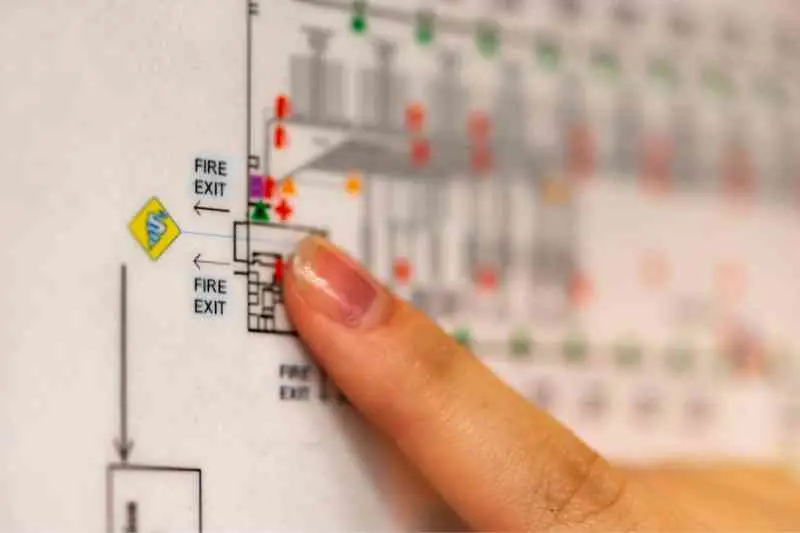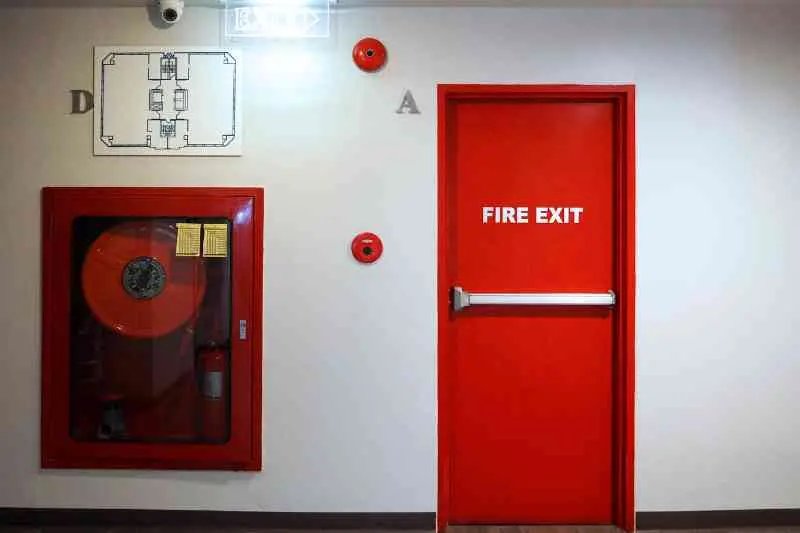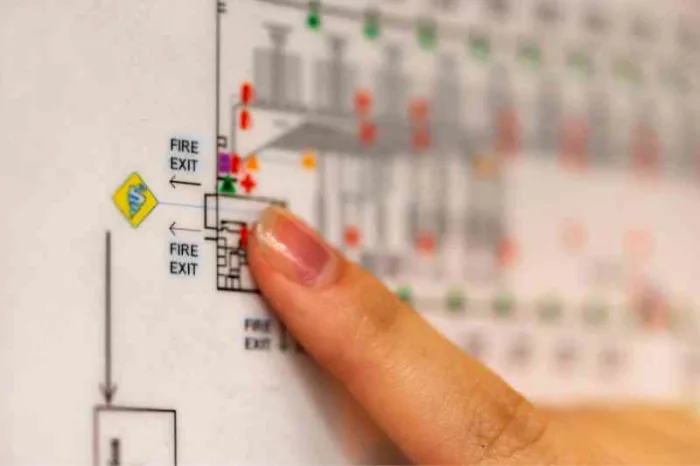Key takeaways
- A multifamily emergency exit plan requires both a primary and a secondary exit in case of emergencies.
- Create a comprehensive emergency exit plan to coordinate with local emergency departments, building ordinances, and regulations and meet the standards of local property management associations.
- Inform tenants of emergency procedures during the onboarding process, send newsletters to update them on any changes, and host in-person and virtual emergency preparedness meetings to spread awareness about emergency protocols.
- Access control systems can automatically contact emergency providers, provide 24/7 real-time updates, auto-unlock or lock doors, and offer easily accessible audit logs in the event of emergencies.

Ensuring the safety, physical security, and well-being of residents is a priority in every multifamily community. So, in the event of a multifamily exit emergency, it’s the responsibility of a property manager or owner to enhance the safety and responsiveness of their communities in times of crisis.
Read on to learn how to create a multifamily exit emergency plan. Then, explore ways to spread the word to residents. Finally, discover how access control can transform your emergency exit plan today.
This post covers:
- What kind of emergency exit plan do I need?
- How do I create a multifamily exit emergency plan?
- How do I keep residents informed about emergency protocols?
- How access control can streamline your multifamily exit emergency plan
- Multifamily exit emergency plan FAQs
What kind of emergency exit plan do I need?
Every multifamily building should have a primary and a secondary exit to facilitate a smooth evacuation in an emergency.
Additionally, multifamily buildings need an emergency exit plan in the event of fires, floods, earthquakes, shelter-in-place protocols, and other unexpected emergencies.
For this reason, a proactive emergency exit plan is a crucial feature of any apartment building security system.
Furthermore, multifamily exit emergency costs can be significant if no procedure is in place to handle emergencies.
How do I create a multifamily exit emergency plan?
To create an emergency exit plan, coordinate with local emergency departments, follow building ordinances and regulations, and adhere to the standards of property management associations in your area.
Additionally, provide a clear map of evacuation routes to streamline the exit process for your building’s occupants. These maps should be posted near exits, elevators, and stairwells.
Additionally, provide emergency information that indicates to staff and residents which routes to take during a crisis or weather disaster. Moreover, these notices should include information like avoiding elevators in the event of fire emergencies.

How do I keep residents informed about emergency protocols?
Spread the word to residents and train your staff about multifamily exit emergency protocols to build a proactive exit plan.
Here’s how you can keep residents informed about emergency procedures:
- Keep tenants informed during the onboarding process. Include emergency protocol information in leases, contracts, and welcome packets that are easily accessible online.
- Send newsletters. Use newsletters to inform residents about emergency evacuation procedures. Additionally, use newsletters to promote mock evacuations and fire drills so that your residents can familiarize themselves with exit emergency procedures.
- Host in-person and virtual emergency preparedness meetings. Virtual and in-person emergency preparedness meetings are a great way to educate residents and staff about different exit procedures.
How access control can streamline your emergency exit plan
Access control systems are one of the best ways to streamline your emergency exit plan.
Here are the benefits of access control systems in the event of emergencies:
- Automatically contact emergency providers. Access control solutions can send automatic alerts to emergency personnel in the event of an emergency for faster response times.
- Provide 24/7 real-time updates. Receive 24/7 notifications about the status of emergencies so that you always stay informed in the event of a crisis.
- Auto-unlock or lock all doors. Depending on the type of emergency, be it a fire or a shelter-in-place crisis, access control systems can auto-lock or unlock doors to streamline the evacuation process. Additionally, access control features like push-to-exit buttons make it easy for residents and staff to evacuate safely. What’s more, auto-lock features ensure that unauthorized users don’t access your property in the event of an emergency.
- Audit logs. View audit logs that make it easy to track who’s entering or exiting your property in the event of an emergency. As a result, this makes it easier to verify all your building’s occupants are able to evacuate safely.
Learn how ButterflyMX works:
Multifamily emergency exit FAQs
Here are some commonly asked questions about multifamily emergency exit plans:
- What is the purpose of an emergency exit?
- What is the difference between an exit and an emergency exit?
- What are the emergency exit lighting standards?
- What are the exit light requirements for NFPA?
What is the purpose of the emergency exit?
The purpose of an emergency exit is to ensure that a building’s occupants can evacuate safely in an emergency.
Additionally, an emergency exit offers an alternative route for evacuation in case one of the exits is inaccessible during a crisis. What’s more, ADA push buttons make exits accessible for residents with disabilities.
What is the difference between an exit and an emergency exit?
The difference between a normal exit and an emergency exit is that normal exits are used daily. In contrast, an emergency exit is only used when a normal exit isn’t accessible.

What are the emergency exit lighting standards?
The emergency lighting requirements for commercial buildings state that emergency lights must emit at least 1.07 lux (0.1 foot-candles) of light per 100 square feet.
Additionally, these lights should be located along the floor of emergency exit paths so that tenants can navigate safely in the event of a power outage.
What are the exit light requirements for NFPA?
NFPA (National Fire Protection Association) requirements outline that emergency illumination be provided for a minimum of 90 minutes in the event of lighting failures.







